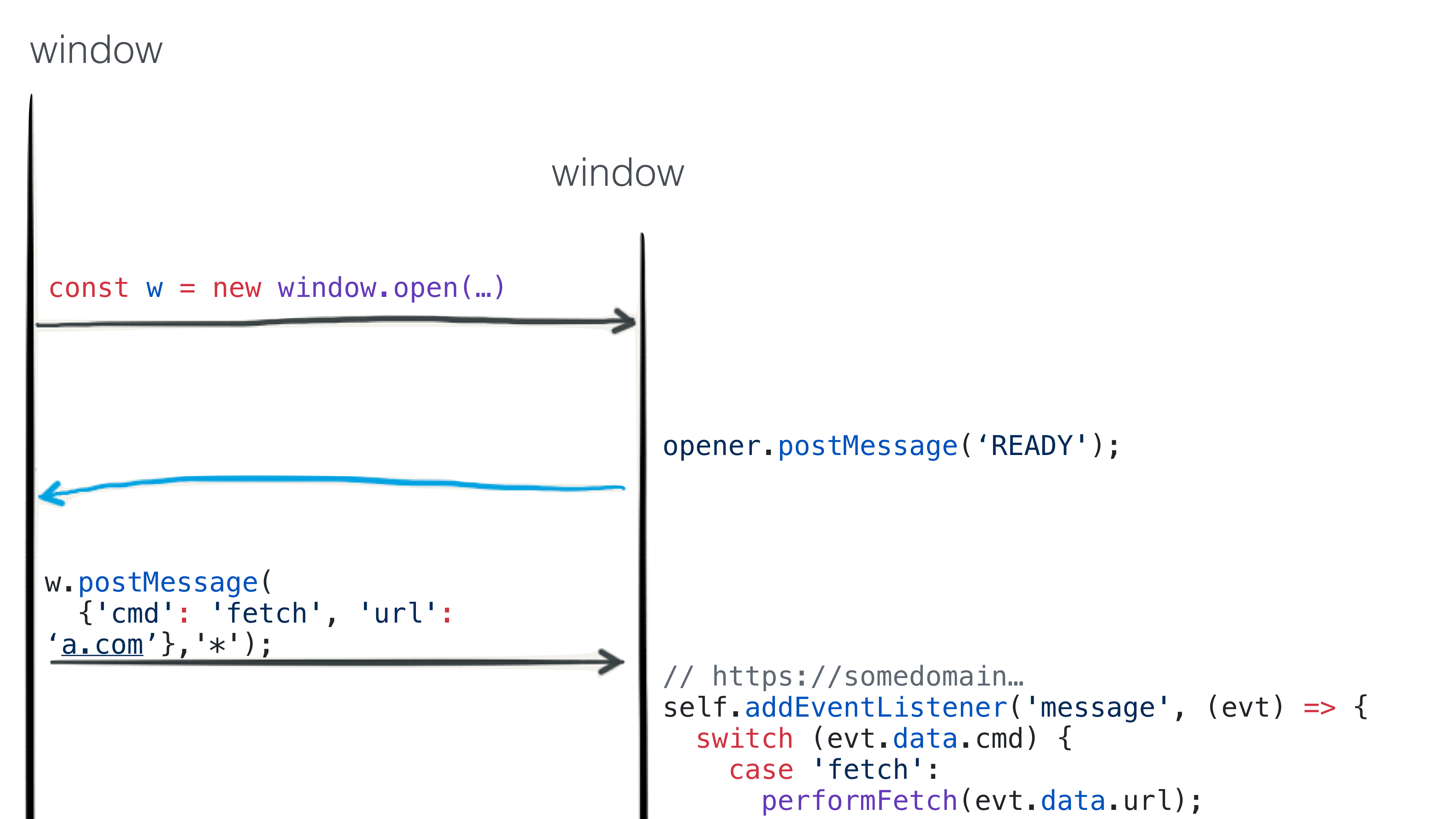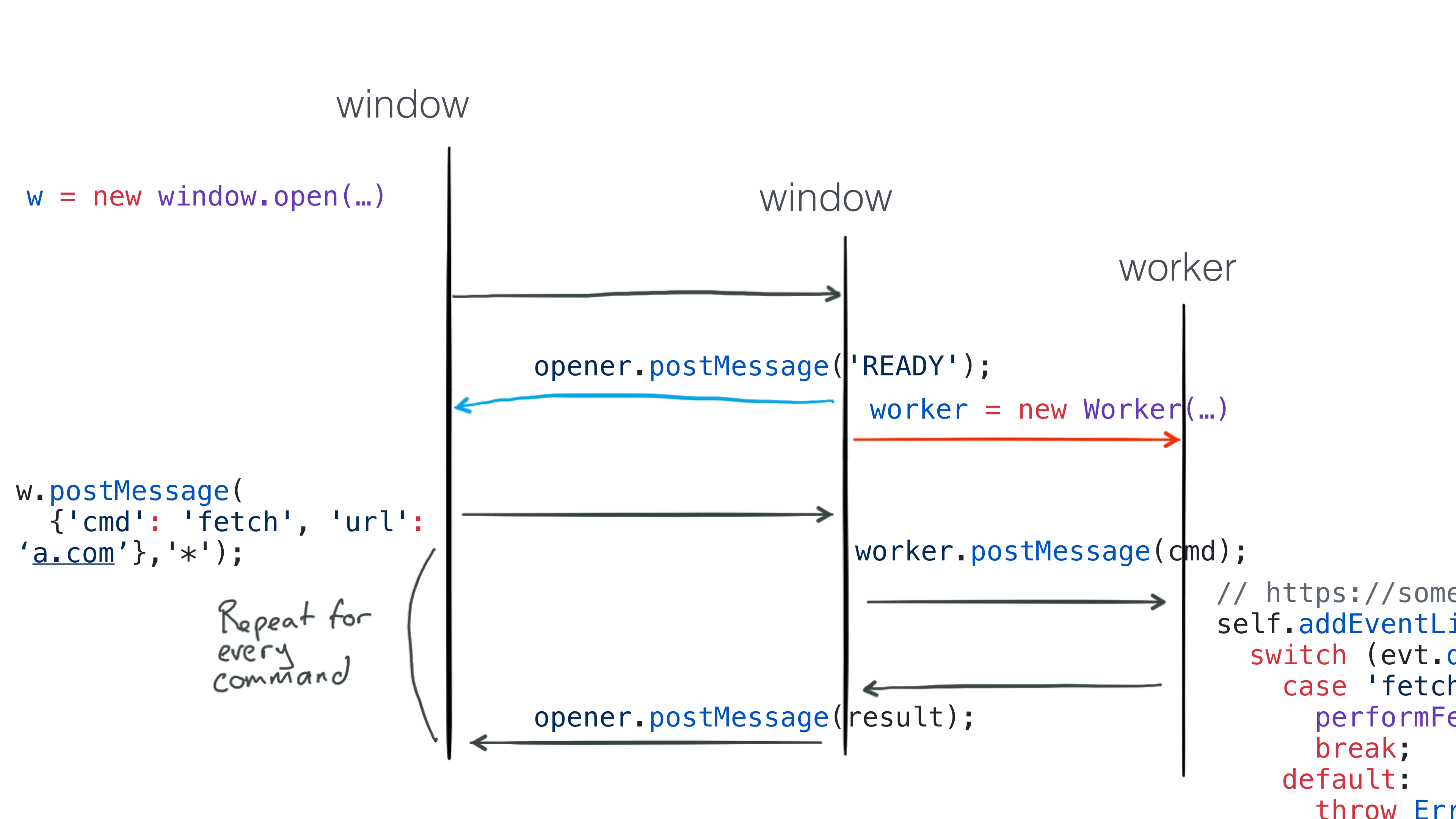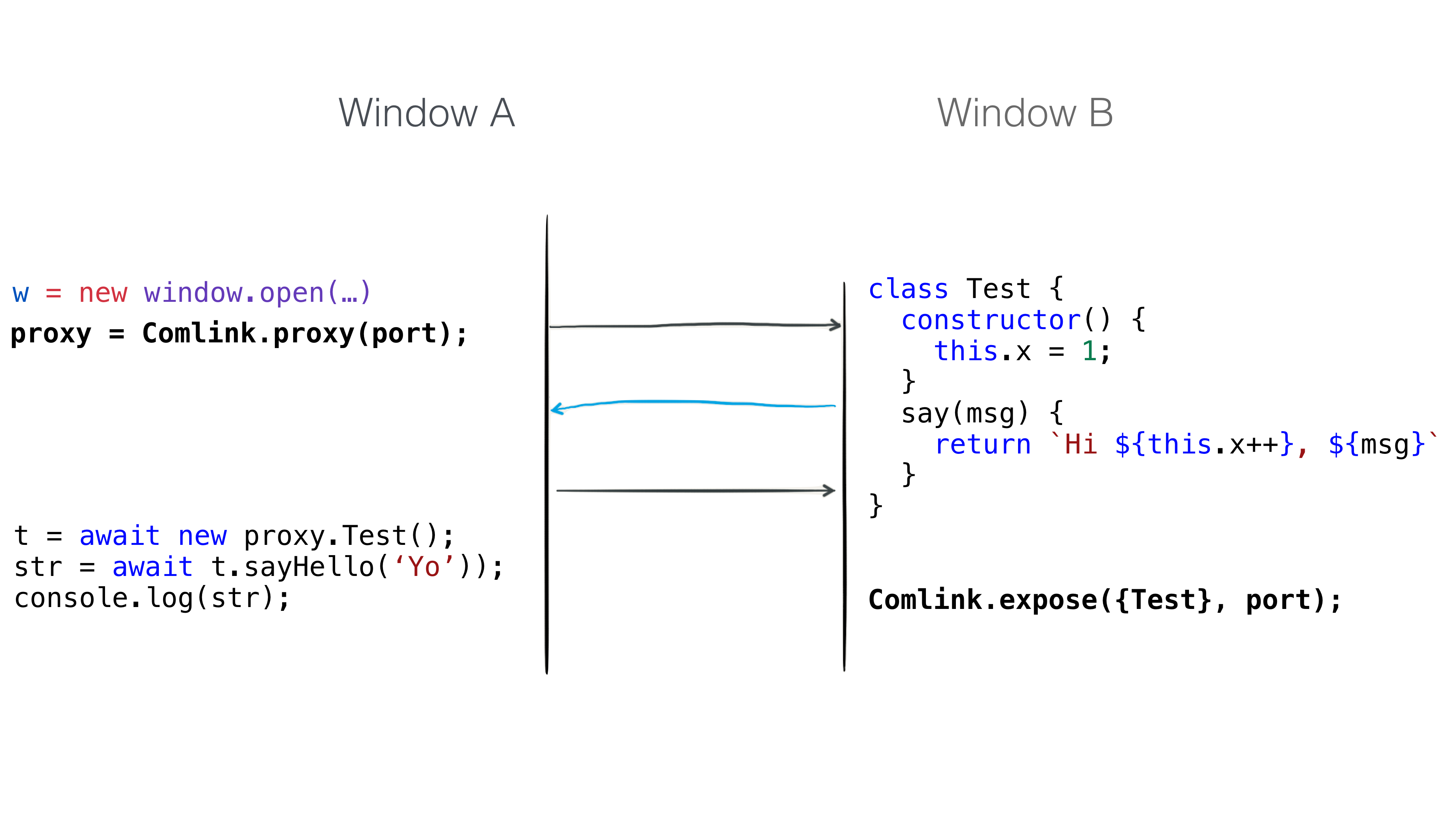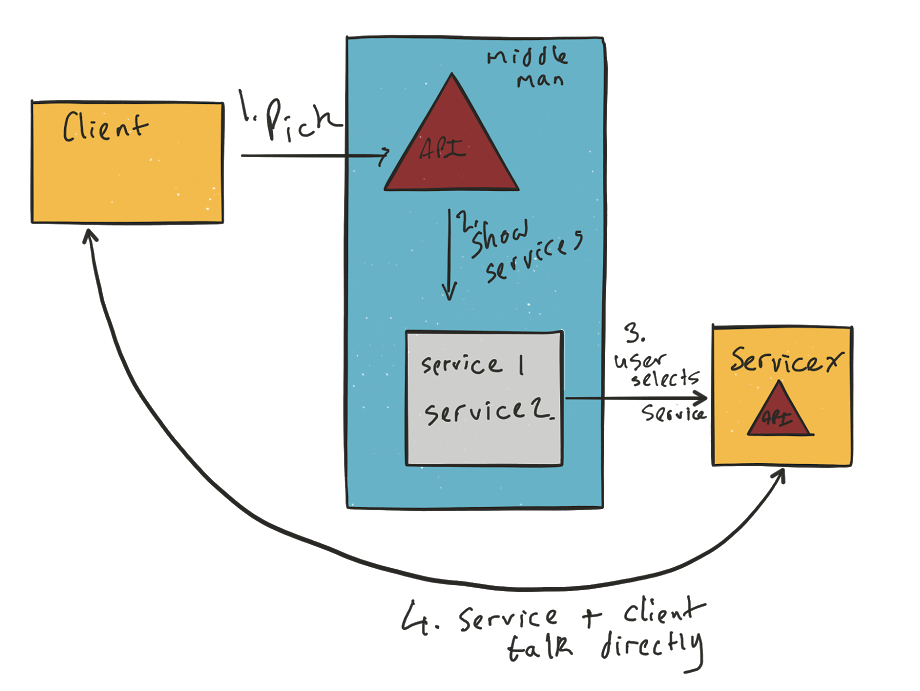I never got over the death of Web Intents. I always felt that there is still a serious problem on the web, we build silos that lock the user into one web site and we don't connect our apps together to build richer experiences. We have links that allow us to navigate to another site, but we don't connect our apps to functionality that we can use in our sites. Be it picking an image from a cloud service to use in your app, or editing an image in the users preferred editor; we just don't link our services the way we link our pages.
Web Intents was a failed attempt to fix that. The Share API solves one use case for interconnecting sites and apps, but generally IPC and service discovery have never been solved and I think I have a solution... Ok, I don't have a solution, I have an experiment that I am incredibly excited about.
Over the past couple of months Surma on my team and Ian Kilpatrick were working on a shim for the Tasklets API. The Tasklets API was designed to allow a light-weight multi-threaded API's to exist on the web. An ES6 class could be exposed as a 'tasklet' and you could call it without blocking the main thread - great for UI's. The tasklet API by itself is very interesting, but the most interesting piece for me was that they built a Polyfill using a Web Worker and developed a way to expose the functionality of the ES6 class that was defined in the Worker. They had abstracted all of the complexities of the postMessage API away into a neat package and a sane model for JS developers.
One of the reasons that we built the Web Intents API was because the developer experience of creating an API and a service that worked with the postMessage API was incredibly complex, you have to deal with the postMessage API and then you have to manage a complex message processing system and associated state machine.

It's just complex. It get's even worse if you want to have two windows
interacting with each other. The window you open has to signal back the the
opener that it is ready before you can start to send it messages. TL;DR -
window.open opens about:blank before it navigates to the URL you define.

It gets even more complex when you want to pass messages between multiple windows or workers in other windows.

I think this is one of the main reasons why people expose client side API's. It's too hard.
The tasklets polyfill had a solution buried inside of it and I cheekily asked Surma if he could refactor the tasklets API into a simple Proxy API, a couple of hours later out popped Comlink. Comlink is a small API that abstracts the MessageChannel and postMessage API's in to an API that looks like you are instantiating remote classes and functions in the local context. For example:
Website
const worker = new Worker('worker.js');
const api = Comlink.proxy(worker);
const work = await new api.HardWork();
const results = await work.expensive();
Web Worker
class HardWork {
expensive() {
for(let i = 0; i < 1e12; i++)
sum += /* …omg so much maths… */
return sum;
}
}
Comlink.expose({HardWork}, self);
We expose an API on the service, we consume the API in the client via a proxy.
I think it is incredibly compelling and Comlink by itself has the ability to revolutionize the usage of Web worker by drastically improving the developer experience by providing a simple API for their team to be able to use.
Doing the same thing between windows is just as easy.

But I had another thought... I can reinvent a small part of Web Intents was supposed: improve service discovery and make it easy for developers to interact with the services.
Web Intents?
One of the neat things about the Comlink API is that it automatically will try
to use Transferable objects to pass data between the client and the service,
and it turns out that MessagePorts are transferable. The idea that I had is
that if I could create a simple API that is designed to just return a
MessagePort based on some criteria (such as verb) then as the client, I wouldn't
care where that MessagePort came from.
Here is my thinking: I will have a site that acts as a middle-man and will maintain a list of services and where they live and will be able hook up clients who ask for types of services, kind of like so.
- A service site will be able to say to the middle man "I offer service X that works on data Y and lives at page Z"
- A client site will be able to say to the middle man "I need a service that does X on this data Y. What do you have?"
Mapping this back to a rough design, I need a Service that exposes two methods:
register and pick.
register, will, well register the service with the middle man. pick on the
other hand is a little more interesting and I've broken it down into a couple of
steps.

The flow isn't overly complex when you dive into it. I crated a basic wrapper that you include in every service and client application. The wrapper handles the first interaction with the middleman and does some basic housekeeping by wrapping the complexities of opening a window to the service picker at 'https://web-intents.glitch.me/pick'.
Once the picker is open it will find all the services that match the criteria the user needs, it will then present it to the user as a simple list. The user opens their preferred site and behind the scenes that site exposes it's API back to the original client via the middleman. Finally, when the connection is complete and we are talking to the chosen service we can remove the middle-man.

The process actually is a little more complex than I am letting on. Under the hood we are passing a lot of MessagePorts between windows but the consumers of the API never see any of this complexity. The good thing is that that when the client and the service are connected and they talk directly via a nice service defined API and they don't actually know who is on either end. Neat.
Below is a quick dive into the code to show how simple it is.
Service (demo)
The service is relatively simple, it has a class that interacts with the DOM and logs some output.
We expose the Test class to the ServiceRegistry and we offer a way to
register the capabilities of this service.
class Test {
constructor() {}
outputToPre(msg) {
let output = document.getElementById('output');
output.innerText += msg + '\n';
}
}
let registry = new ServiceRegistry({ Test })
register.onclick = async () => {
let resolvedService = await registry.register('test-action','*', location.href);
};
Client (demo)
The client is simple, we create an instance of the registry and call pick.
pick connects to the middleman, and waits for the user to select the
service. Once the user selects the service the middleman (ServiceRegistry)
passes the API that the remote service has exposed to the client. We can
then instantiate an instance of the remote API and invoke methods on it.
let registry = new ServiceRegistry();
let resolvedService = await registry.pick('test-action','image/*');
remote = await new resolvedService.Test();
remote.outputToPre('calling from window.');
I am quite pleased with this as an experiment. Here is a video of the Service Discovery and invocation of the above code.
Let me know what you think. Too much?
I lead the Chrome Developer Relations team at Google.
We want people to have the best experience possible on the web without having to install a native app or produce content in a walled garden.
Our team tries to make it easier for developers to build on the web by supporting every Chrome release, creating great content to support developers on web.dev, contributing to MDN, helping to improve browser compatibility, and some of the best developer tools like Lighthouse, Workbox, Squoosh to name just a few.
I love to learn about what you are building, and how I can help with Chrome or Web development in general, so if you want to chat with me directly, please feel free to book a consultation.
I'm trialing a newsletter, you can subscribe below (thank you!)




